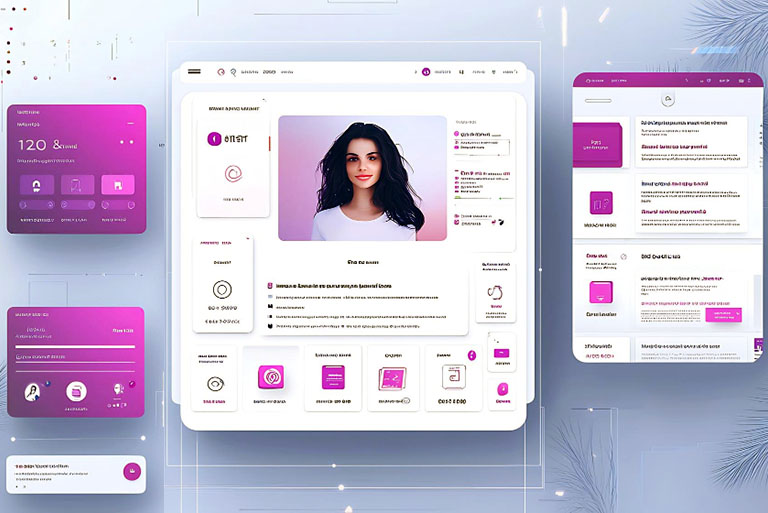I see it all the time. A UX aspirant tells me, “I’m adding one more app redesign, one more website, one more clone project to my portfolio so I have more stuff for recruiters.”
In truth, that extra “project” often becomes noise. It dilutes focus. It hides your best work. It confuses the hiring manager.
Instead of more projects, you need one or two deep, well-told case studies that show your thinking, your decisions, and your impact.
Let me explain why — and how to make this decisive shift. Then I’ll show you how UXGen Academy and Mentor Manoj can help you do it affordably, smartly, and in a human-centered way.
Why “more projects” is a trap
1. Quality beats quantity — always
In the UX world, recruiters and hiring managers don’t click through 20 shallow portfolios. They want 2–3 case studies where you solved problems, iterated, learned, and delivered results. This is confirmed by many UX portfolio guides, which emphasize “powerful storytelling, strategic curation, and data-driven case studies.” The Interaction Design Foundation+1
Showing 10 superficial redesigns of existing apps doesn’t tell your story. A single, well-documented case reveals your mindset, your constraints, and your trade-offs.
2. Focus signals mastery
When you prune your portfolio and show fewer, stronger works, you signal confidence: “I know what’s good. I know what to show.” That gives the viewer trust. It says: “I can pick impactful work rather than just fill space.”
3. Blocker removal — deeper learning
When you reduce the number of projects you chase, you free time to go deep: user interviews, usability testing, data tracking, iteration. That depth is what separates a beginner from a solid UX designer.
A shallow project shows “look, I used Figma.” A deep one shows “I proved this design improved conversion by 25% in 2 weeks.”
What you need instead
Here’s what truly belongs in your portfolio (and in your career focus):
1. Case studies, not gallery pieces
Pick 1–2 projects where you led most of the work. For each case study, follow a clear structure:
- Problem / Challenge
- Research & insights (user interviews, surveys, competitor analysis)
- Ideation, wireframes, prototypes, and user feedback
- Final design & tradeoffs
- Outcome and metrics (e.g. improved task success, reduced errors, engagement lift)
- Reflection: what you learned, what you’d do differently
This is also recommended in guides on writing UX case studies that land jobs. uxplaybook.org
2. Show process & thinking
Design artifacts (wireframes, flows, sketches) are not just for show. Annotate them: why did you choose this path? Why not the other? What constraints (business, engineering, time) shaped your decision?
That is gold. It shows you think.
3. Outcome + impact
Whenever possible, include metrics: “Task time reduced by 30%,” “More users completed signup,” “Drop-off moved from 50% to 20%.” Even if it’s a student project, you can run simple usability tests and show before/after numbers.
Without a measurable result, your case looks fictional. With metrics, it seems real — and that builds trust and authority.
4. Person behind the designer
Write in first person. Tell a little story: “I struggled when users got confused here… I sat with them, listened, and revised.” Share challenges, failures, and revisions. That vulnerability builds a connection. It says: “I’m human. I learn.”
A real story — my portfolio pivot
When I started, I had seven minor redesigns in my portfolio, each showcasing static screens. During interviews, every hiring manager asked: “Which one did you lead end-to-end? What did you test? What changed after feedback?”
I replaced five of them with one comprehensive case study from a freelance project, covering the entire process from stakeholder brief to user research, prototyping, A/B testing, and launch. In interviews, I could walk through decisions, failures, pivots, and lessons. Response improved dramatically. My callback rate jumped from ~15% to ~40%.
That pivot taught me: depth matters. Story matters—impact matters.
Trends & context (2025) — why this matters now
- AI in design tools: Tools like Figma, prototyping AI, and generative UI are becoming more powerful. But they also level the playing field. What separates you won’t be how fast you mock up layouts, but how you think, test, and justify your choices. UX Trends+1
- Ethical, accessible design is gaining prominence. Recruiters look for designers who care about inclusivity, data privacy, & real user value. An in-depth case study can effectively demonstrate commitment. UX Design Institute+1
- Demand for deep strategy over surface UI: As AI takes over repetitive parts, companies value UXers who can strategize, research, frame problems, and decide what to automate and what to keep human.
- Authentic storytelling wins: Your personal journey, constraints, decisions — these tell more than clean pixels. In 2025, hiring managers will look not just for skills but for mindset, adaptability, and human logic.
So the shift from “many small projects” to “a few deep stories” isn’t old-fashioned — it’s future-proof.
How UXGen Academy will help you make this shift & succeed

I’m part of the UXGen Academy. Here’s how we help learners build a portfolio that matters, not a cluttered shelf of useless projects:
Live Mentorship with Manoj
- Alternate-day live sessions: UX Expert Mentor Manoj joins live every other day to solve your live queries.
- Recorded & shared sessions: You may miss a day? Don’t worry — we share recordings so you can rewind, revisit, and catch up.
- Critique & feedback: Manoj will review your portfolio and case studies, suggest improvements, point out gaps, and help you refine your work.
Practical portfolio building support
- We’ll guide you to select the right 1–2 projects, not just many small ones.
- We help you apply the case-study framework: research → design → test → metrics → reflection.
- We’ll help you turn your student/freelance work into strong stories, with mock metrics when needed.
Interview & internship help
- Mentor Manoj will help you prepare for UX interviews, with mock questions, feedback, and coaching.
- We also help you secure 2 months of live internship at UXGen Studio (production house under UXGen Technologies). You’ll work on real projects, build real impact, and get something to show in your case study.
Balanced AI + human mentorship
- We teach you how to use AI smartly, not blindly: helping you accelerate wireframes, ideation, and prototyping, always with human judgment.
- We believe in innovative learning, not wasted hustle time — especially in the era of AI. You don’t need to spend 100 hours when 20 focused hours guided well can achieve more.
- We teach when to intervene manually, when to let AI assist, and how to validate AI output with human insight.
Affordable & learner-centric
- Our prices are built for learners (especially in India / North India) — we keep fees accessible.
- We share all live sessions as recordings, so your learning is asynchronous-friendly.
- We focus on impact, not extra fluff — no unnecessary modules, no filler. Every session yields actionable deliverables to enhance your portfolio and drive growth.
In short, UXGen Academy gives you the guidance, feedback, structure, and real-world exposure to make your portfolio and UX career leap ahead.
How to actually start today
- Audit your current portfolio.
Write down all projects. For each, ask: “Can I tell a full story using it?” If the answer is “no,” consider dropping it or merging it into another. - Pick 1–2 anchor projects.
Prefer ones where you had more control. If not, consider a small real-world user problem (perhaps for a local shop, NGO, or community) and start one. - Write your first case study draft.
Use the structure: Problem → Research → Ideation → Prototype → Test → Outcome → Reflection. - Get feedback early
Share with peers, mentors, or in the UX community. Use critique to iterate — this is how your depth improves. - Refine visuals & presentation.
Use a clean layout, annotated images, and storytelling tone. Use interactive prototypes if possible. - Add metrics / mock metrics.
If you don’t have user data, you can run a usability test (even with 5 users) or A/B mockups. Even mock before vs after numbers help. - Iterate & polish
Refine flow, clarity, copy, visuals, storytelling. Reduce noise. Ask: “If the reviewer reads only 60 seconds, what will resonate?” - Visit a mentor session (like UXGen Academy)
Get direct, personalized critique and suggestions.
FAQ for UX learners

Q: What if I don’t have real users or a live project?
A: You can still conduct usability tests with 5 people (friends, relatives). Even rough tests are better than nothing. Or pick a local small business and redesign their site/app (with permission) — treat that as your project.
Q: I’m worried my English is not strong — will that affect my case study?
A: It’s okay. Focus on clarity over fancy words. Use simple English and short sentences. Tell your story. What matters is logic, insights, and empathy. If needed, get a friend or mentor to proofread.
Q: How important is AI in my process?
A: AI is a tool — helpful for ideation, draft layouts, and prototyping suggestions. But human oversight is essential. Always question AI output. That’s what leaders do. In 2025, designers who can direct AI, rather than being directed by it, will stand out.
Q: How long will it take to see portfolio improvement?
A: With focused effort and good mentorship, you can see visible improvement in 4–8 weeks. Depth matters more than speed. Even one solid case in your portfolio is a step ahead.
Q: Will adding fewer projects limit my options?
A: No. The proper case studies open doors. You can always add more later. But focus first on making the ones you have shine.
Final thoughts
More projects in your portfolio are a comfort zone, not a strength. The real power lies in sharpening one or two well-told, deeply reasoned, impact-oriented stories. That’s what hiring managers remember. That’s what shows your real potential.
With Anthropic AI, ChatGPT, UXPilot.ai, and Figma AI tools, anyone can create numerous mockups. What distinguishes you is insight, reflection, evidence, and restraint. That is what human designers bring to the table beyond AI.
UXGen Academy and Mentor Manoj are here to guide you: to help you choose what to show, how to tell it, how to negotiate AI vs human work, and how to get real exposure (internship, interview). We help you do this affordably, gradually, and smartly — especially for learners in India and North India.
So don’t pile up shallow projects. Let’s take a step back, pick the story that matters, and build that deeply. That’s how you’ll move from “many projects” to “one powerful portfolio that speaks for you.”
